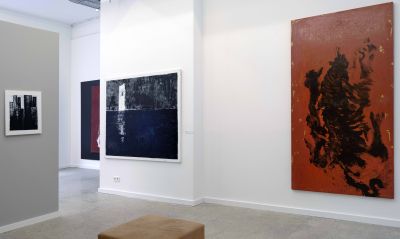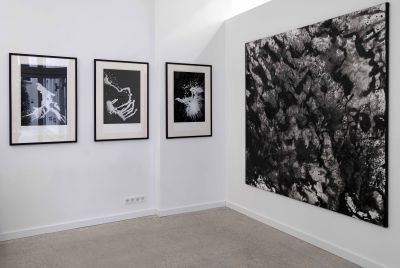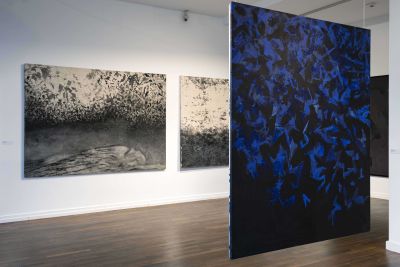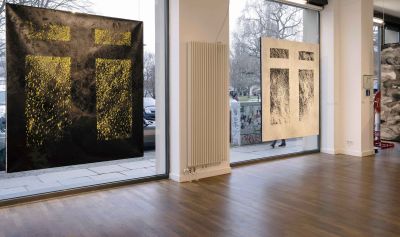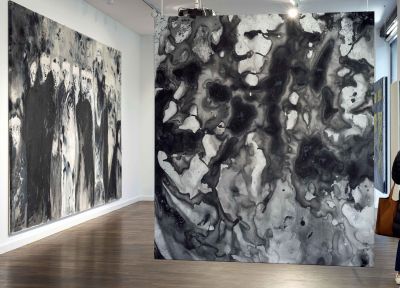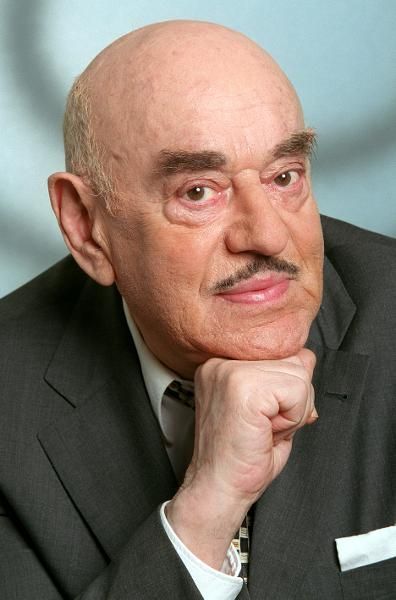EITHER YOU SEE IT, OR YOU DON’T. The topography of eternal return in the painting of Jerzy Skolimowski

With reference to Immanuel Kant, Jacques Derrida, in his aesthetic theory “The Truth in Painting”, warns against allowing a situation to develop in which the parerga, the trivialities, become more important than the essential that we are seeking. The parergon is simply an accessory in a space, something that exists beyond the work, even if it frequently triggers the creation of a work of art. Skolimowski, who frequently shifts between ergon and parergon, succeeds almost masterfully in balancing out the two areas. He is very aware that he is oscillating between fiction and truth, and that the path that he treads is not always a very promising one, even if he has chosen it himself. The only solution, therefore, is not to give in, to have mastery over the path, to subject it to one’s own requirements and ideally to engage with it, whereby here, rationality is not considered to be the highest cognitive authority, since its possibilities tend to be limited.
For Skolimowski, the credo of his artistic fulfilment clearly appears to consist of two imperatives: destroy and build. This occurs thusly: the ascetic, intellectual painting, in which we initially see no more than what we see, moves decisively towards the other side of the mirror; it asks questions and attempts to approach answers, although these are never unequivocal. In being aware of his own freedom, Skolimowski is also mindful of the freedom of the person facing him, whom he allows to make their own choice, while at the same time he finds a mode of entering into a dialogue with them. With discreetly inserted symbols, the artist equips the viewer with keys to a personal interpretation of his works, whereby he also perceives the meeting with the recipients of his art, which occurs in the reception, as an opportunity to deepen his self-knowledge and as an impetus for his continual process of change. Is that perhaps why the “viewers who are not in a hurry” are transfixed by the expression and calm portrayal, the impact of which lasts beyond the minutes spent in front of the pictures? Might they possibly notice the traumatic storms that gently cross over into light-filled narrations of one’s own satisfaction with a peaceful sense of permanence, only in order to experience the moment immediately afterwards when these beautiful conventions are broken by undisciplined transitions? In this way, we touch on the time references of Skolimowski’s painting, since time has an extremely important function in his artistic imagination and has an impact on the correct way of reading his intentions.
Time always exists concurrently, in many dimensions and on many levels. Thanks to the time that is actual, that is real, time that has already been experienced and time that is only imagined, everything can be construed multiple times and in different ways. Time is the creator of what is happening in the image; it slows down or accelerates the narrative in order to underscore it again and again with Skolimowski’s dichotomy of continuity and impermanence. At times, a space treated in this way loses its reality as an image, whereby both the creator and the observer know that they are moving between fiction and truth. And now I ask myself: might every profound interpretation be a kind of wishfulness for and questioning of everything? How should the end of the interpretation be determined in order to leave the sanctity of creation untarnished?
In my interpretation, Skolimowski’s paintings are wise stories about the nostalgia of the turn of the century, about how right it is to collect, preserve, and regain the past, and about life that often plays out on the edge of the abyss... They are also stories about truth in art, although perhaps the most important insight is that in the face of the constantly disappearing horizon, one remains on one’s own path, and although the horizon can be reached at the distance of an outstretched hand at most, that one continues, always remaining in motion, discovers new worlds and hopes for change. After all, so in art, so it is in life, even if art is not life.
Magda Potorska, March 2023




